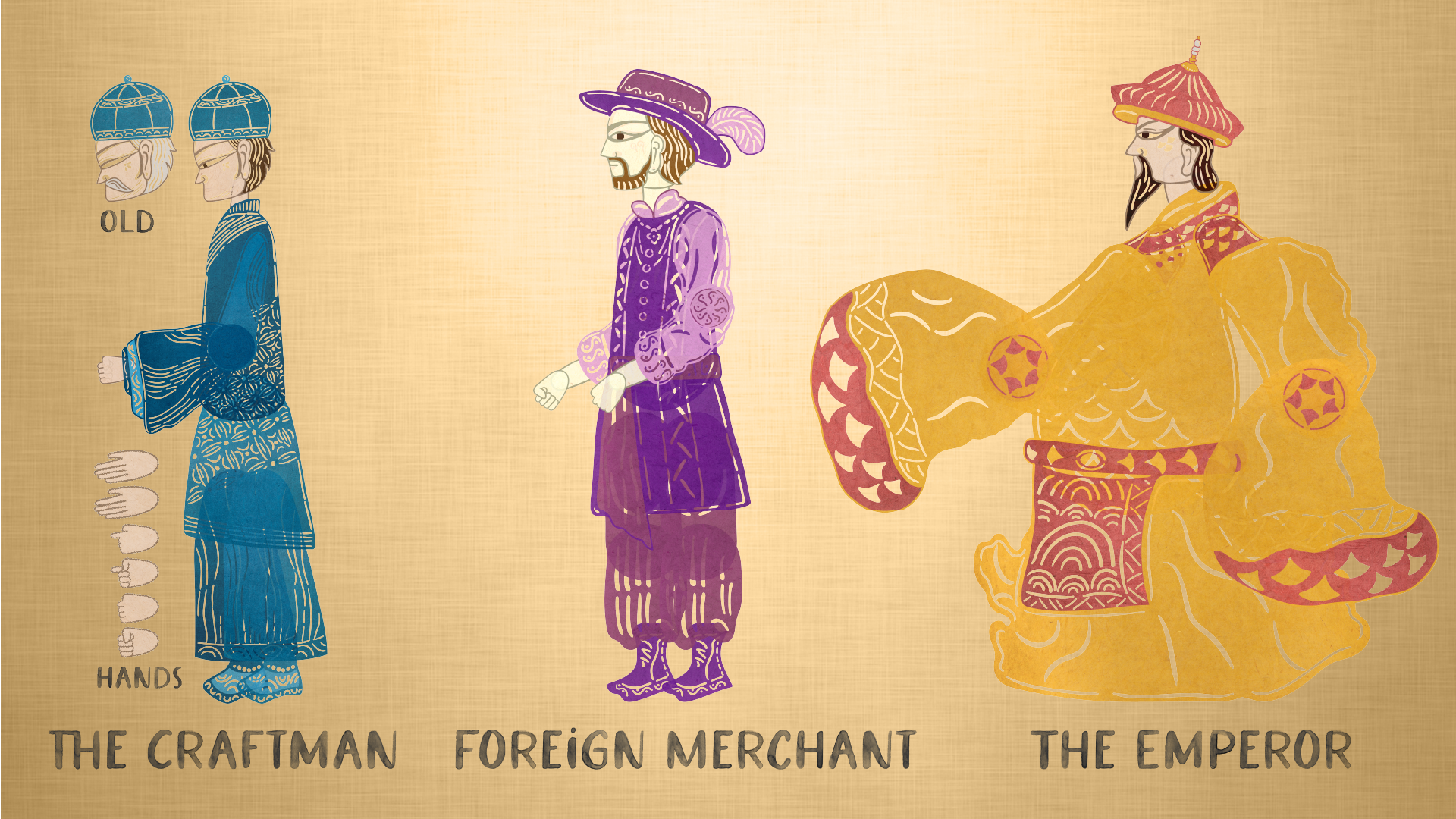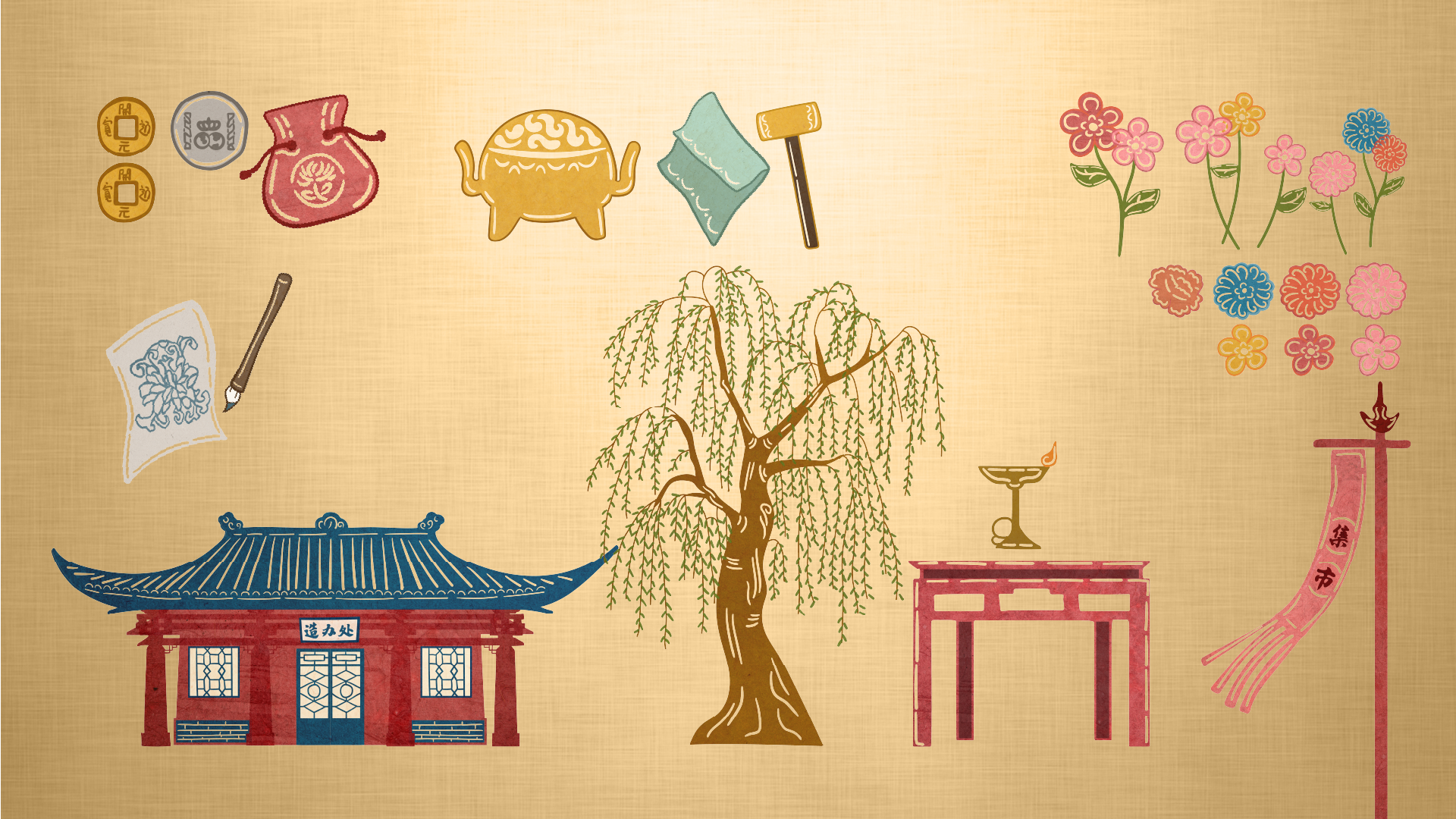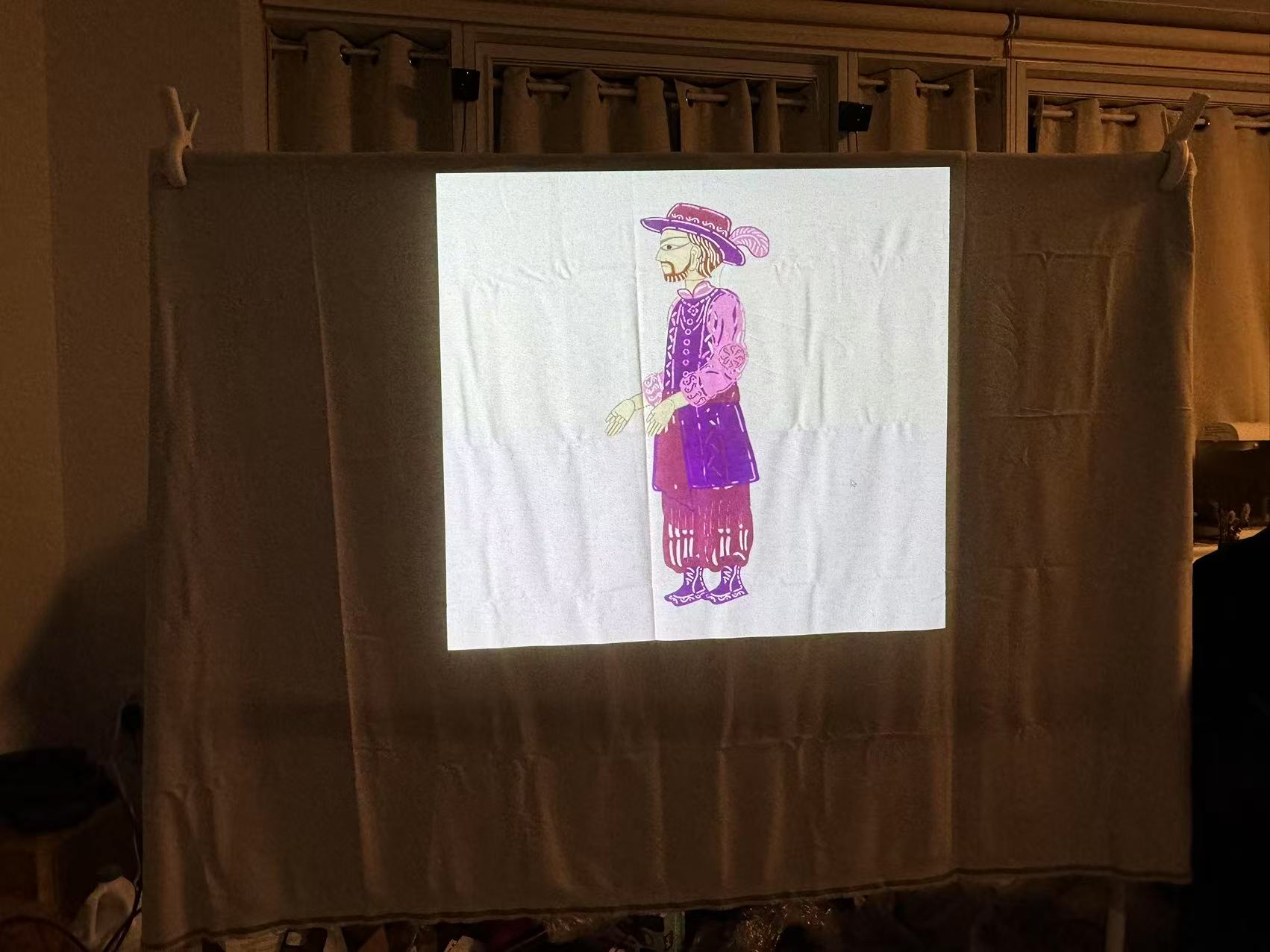For week 4 I mainly focused on designing the shadow puppet style characters, drawing other assets in the same style and putting together the projection screen.
One of the biggest challenges in character design is creating a style similar to traditional Chinese shadow puppetry while ensuring that the characters fit within my own story. A major difficulty in this project lies in the fact that traditional Chinese shadow puppetry primarily depicts mythological figures or well-known historical figures, such as military generals from history. However, the characters in my story, such as an anonymous craftsman or a foreign merchant, are not typically found in traditional shadow puppetry themes. As a result, a significant part of my work involves studying and referencing the materials I have collected, as well as analyzing examples created by other artists. My goal is to understand how they apply patterns, when and where they use them, and how they construct characters. I then integrate these insights into my own creative process.
A crucial aspect of my design approach is using texture and patterns to represent different characters. For example, the protagonist, a craftsman of humble status, features more intricate and subtle patterns on his attire, whereas the emperor's patterns are bolder and more prominent.This process involves extensive decision-making.
Another complex challenge is that the final design will be animated in After Effects. Therefore, I need to prepare various elements such as different hand positions and facial expressions reflecting changes in age to accommodate animation requirements. Additionally, I must organize the layers in a structured manner to ensure a seamless workflow in the next stage, avoiding unnecessary revisions.


The next step is to create additional assets in the same visual style, including the props that the characters will encounter throughout the story. In this process, I draw upon the storyboard I previously created, the painting techniques I developed while designing the characters, and references from my historical research. These assets include various types of coins used by the protagonist, prototypes of the incense burners he crafts, the tools he uses, the emperor’s studio where he works, as well as environmental elements such as flowers, trees, and indoor furnishings. This part of the project is not yet complete, as asset creation is one of the most challenging and time-consuming aspects of my work. It is impossible to finish within a week. However, through this week’s progress, I have gained valuable experience, and I will continue developing these assets in the following week. Additionally, I plan to experiment with assembling some simple scenes to prepare for the midterm demo.



Considering the issue mentioned in the previous class regarding the potential unavailability of walls for projection on demo day, I have decided to use my own table to ensure a stable setup. Additionally, I have prepared my own projection equipment. To enhance the texture of traditional shadow puppetry, I modified a purchased projection screen stand by replacing the original fabric with linen. I specifically chose a stand that is easy to assemble so that I can set it up quickly on the day of the demo. After testing, I found that under standard lighting conditions, the projection quality and clarity are both satisfactory. Therefore, this setup does not present any issues.